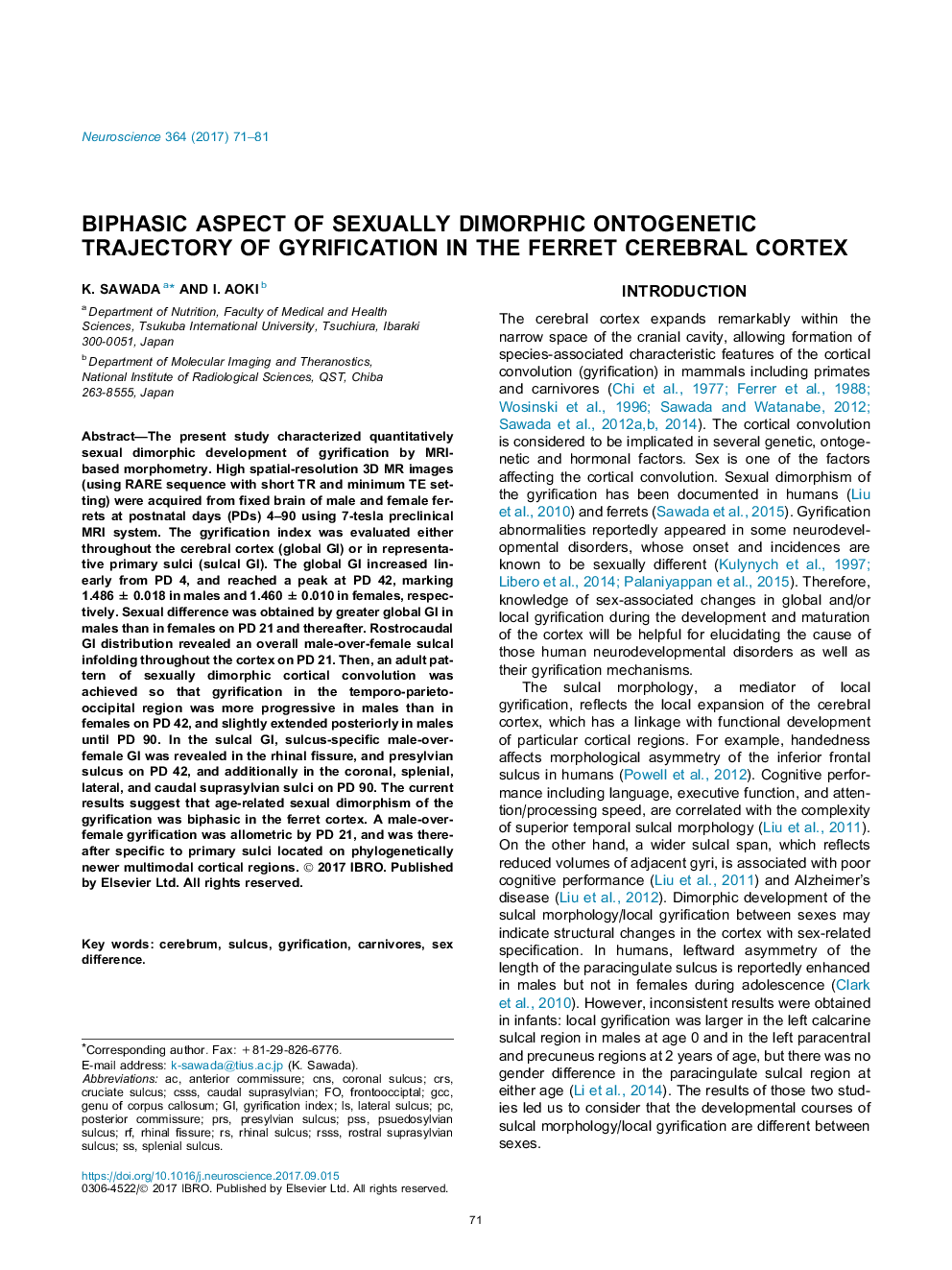| Article ID | Journal | Published Year | Pages | File Type |
|---|---|---|---|---|
| 5737571 | Neuroscience | 2017 | 11 Pages |
Abstract
The present study characterized quantitatively sexual dimorphic development of gyrification by MRI-based morphometry. High spatial-resolution 3D MR images (using RARE sequence with short TR and minimum TE setting) were acquired from fixed brain of male and female ferrets at postnatal days (PDs) 4-90 using 7-tesla preclinical MRI system. The gyrification index was evaluated either throughout the cerebral cortex (global GI) or in representative primary sulci (sulcal GI). The global GI increased linearly from PD 4, and reached a peak at PD 42, marking 1.486 ± 0.018 in males and 1.460 ± 0.010 in females, respectively. Sexual difference was obtained by greater global GI in males than in females on PD 21 and thereafter. Rostrocaudal GI distribution revealed an overall male-over-female sulcal infolding throughout the cortex on PD 21. Then, an adult pattern of sexually dimorphic cortical convolution was achieved so that gyrification in the temporo-parieto-occipital region was more progressive in males than in females on PD 42, and slightly extended posteriorly in males until PD 90. In the sulcal GI, sulcus-specific male-over-female GI was revealed in the rhinal fissure, and presylvian sulcus on PD 42, and additionally in the coronal, splenial, lateral, and caudal suprasylvian sulci on PD 90. The current results suggest that age-related sexual dimorphism of the gyrification was biphasic in the ferret cortex. A male-over-female gyrification was allometric by PD 21, and was thereafter specific to primary sulci located on phylogenetically newer multimodal cortical regions.
Keywords
Related Topics
Life Sciences
Neuroscience
Neuroscience (General)
Authors
K. Sawada, I. Aoki,
